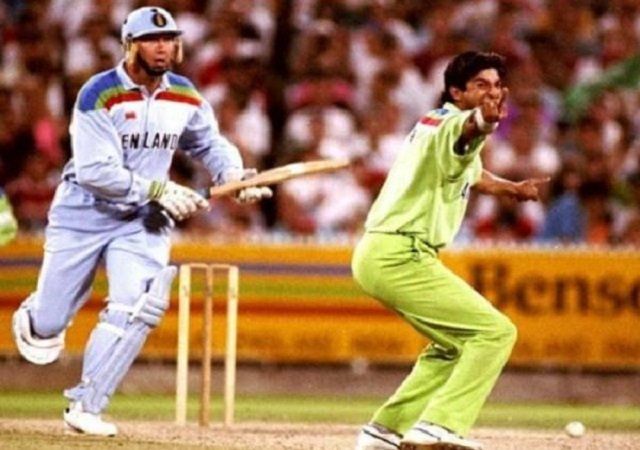My Deep Dive Escape: 1992 Cricket, Corporate Crap, and Wasim’s Magic
You know, people ask why I suddenly decide to start pulling apart some dusty cricket stats from three decades ago. The title says it all: I was checking the scores from the 1992 World Cup Final. Was Wasim Akram the Most Valuable Player? Simple question, right? Nah. Nothing is ever simple.

The whole exercise started because I was stuck, totally bogged down, in the most soul-crushing corporate training session you could ever imagine. They called it “Synergistic Excellence in Multi-Channel Cross-Platform Team Building.” I swear, the only thing they were building was my urge to stare at the ceiling and count paint chips. I couldn’t walk out, but I sure as hell could pretend to be working on some “critical data analysis.”
So, I opened a new spreadsheet. Forget the sales pipeline data they wanted me to model; I needed something real, something that actually mattered. And what matters more than a Pakistani side, led by a damn lion, winning their first World Cup? Nothing. I went straight for the scorecards.
The Data Dump: Punting on the Past
My first move? I didn’t even look at Akram right away. You can’t crown an MVP by just checking the final wickets column. You gotta see the whole bloody picture.
Step 1: The Scorecard Grab.
I grabbed the full match data – the whole shebang. Every run, every ball, every wicket. I had Pakistan’s innings, and England’s chase, sitting there on my screen. I was calculating strike rates and economy rates like my life depended on it, while the “synergistic excellence” lady droned on about leveraging assets.

Step 2: Identifying the Real Contenders (Beyond Wasim).
I knew Wasim was the Man of the Match, but I needed to justify it to myself. I had to knock down the other guys first.
- Imran Khan: The old warhorse. His 72 runs held that collapsing middle order together. He was the foundation, the steady hand. If Pakistan collapses at 150, Wasim doesn’t even get a chance to be a hero. He’s the engine.
- Javed Miandad: Grinding out 58. The glue. Not flashy, but essential. He wasn’t the MVP, but he was the spine.
- Derek Pringle (England): Wait, hold up. This guy nearly ruined the whole party. Took 2/22 off 10 overs. That’s an insane effort in a World Cup final. If England had won, he’d be the MVP shout, no contest. But they didn’t, so he’s the tragic hero.
Step 3: The Akram Deep Dive – Context is King.
Then I circled back to Wasim Akram. Yeah, he made 33 runs at the end, which was a nice little bonus bump to the total, but everyone remembers the bowling. I plotted out the wickets timeline for England’s innings. It was flat, then a wobble, then the big one.
Akram came back in the 35th over, and that’s where the magic happened. He was on fire. He was throwing these balls that would swing miles. It wasn’t just the wickets; it was the who and the when.

- Dismissal 1: Allan Lamb. A crucial 41 runs. Clean bowled. That ball swinging back into the right-hander? Forget about it. England was 141/4. They still had a sniff.
- Dismissal 2: Chris Lewis. The very next damn ball. Bowled him. Two unbelievable reverse-swinging yorkers/inswingers back-to-back. Game over, lights out. England went from 141/4 to 141/6. That’s a match-winning two-ball spell right there, completely killing all momentum and belief.
I realized I had the answer staring at me. Wasim Akram was the MVP not just for his numbers (3/49 and 33 runs), but because he delivered the knockout punch precisely when the other team thought they were getting back up. He was the executioner.
Why I Know This Crap (The Real Story)
I was so deep into this analysis—looking at run rates needed, required economy, comparing Akram’s delivery speeds over the course of the match—that I completely missed my turn to present my “Leveraging Cross-Platform Assets” strategy to the training group.
The “Synergistic Excellence” woman finally walked over, her face a mask of forced corporate cheer, and asked me what I was so intensely focused on. My heart hammered. I thought I was busted.
I didn’t panic. I just leaned in, pointed to my spreadsheet full of cricket stats and complicated looking formulas (which were just basic sums and averages, mind you), and I said, straight-faced:
“I am validating the efficacy of historical resource allocation models within a high-pressure, zero-sum environment. Specifically, quantifying the exponential return on investment delivered by a disruptive low-mid order asset under severe structural constraints.”

I swear to God, she just nodded slowly, her eyes glazing over. She took a step back, whispered, “That sounds… terribly important,” and just… left me alone. She didn’t want to look stupid by asking what the heck a “disruptive low-mid order asset” was, so she just walked away and never bothered me again for the rest of the seminar. The other poor schmucks had to sit through three more hours of garbage.
So, yeah, Wasim Akram was the MVP. But the real MVP was that whole exercise, which saved my butt from another round of mandatory corporate hell. Sometimes, you gotta dive into the past just to survive the present.
